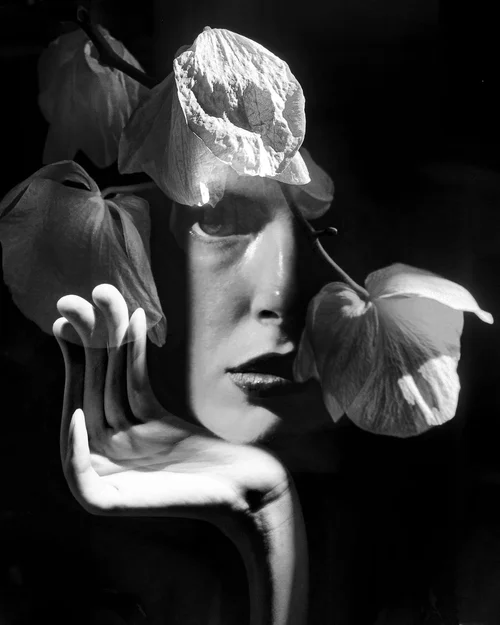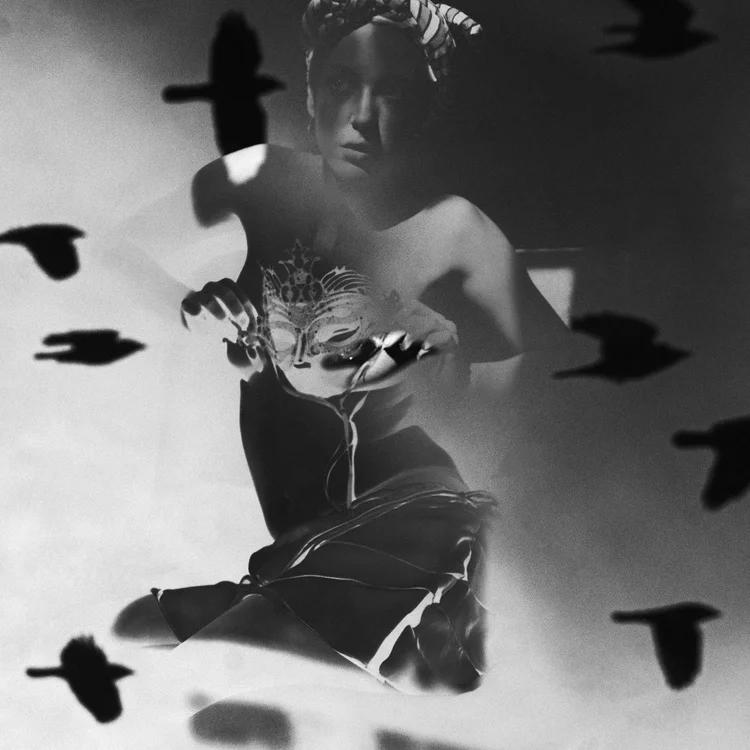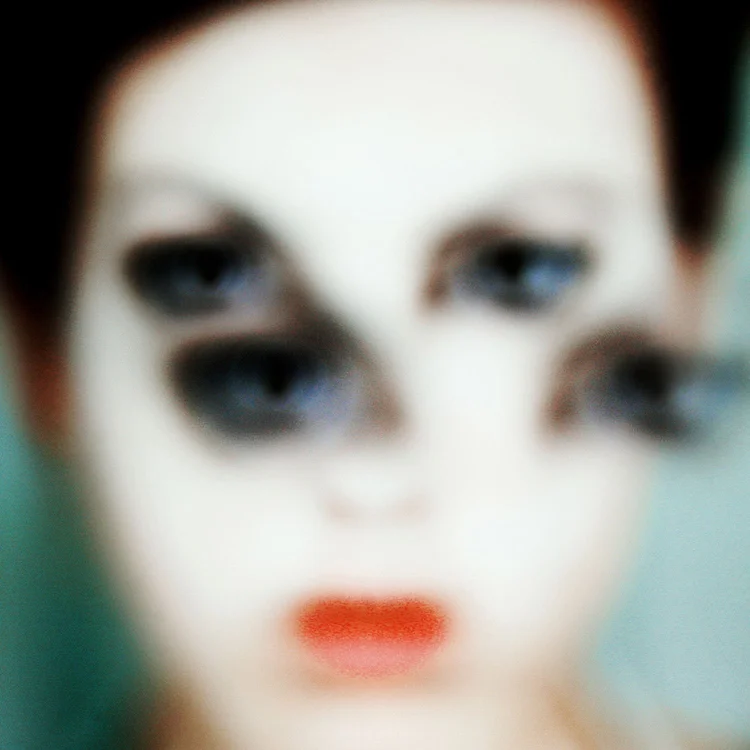Por Juan Pablo Torres Muñiz
La fotografía, en su pretensión de objetividad, ha sido históricamente un instrumento de registro antes que de cuestionamiento. Sin embargo, ciertos artistas operan una torsión consciente de sus códigos técnicos para convertirla en un medio de refracción —no de reflejo— de la realidad institucional. La llamada «deformación analógica», lejos de limitarse a un efecto estético, constituye un recurso cuestionador de primer orden: mediante el manejo deliberado de la luz, el grano, la saturación y el enfoque, el autor reconstruye al sujeto, práctica, efectivamente, como un texto visual cuyo sentido traiciona la apariencia fenoménica. Se trata de una tematización de la persona a través de su imagen, donde lo que se expone es la tensión entre el sujeto y las instituciones que lo constituyen.
En este contexto, la obra de Lydia Roberts destaca no por su perfección técnica —que la tiene—, sino por la potencia con que convierte el retrato en un campo de batalla. Ante sus imágenes, el espectador se enfrenta a una visión elocuente de la identidad como construcción ideológica fragilísima, y a la vez, como planteamiento lógico previo, matemático, sin más pretensiones, enormemente consistente.
[Negación activa]
Roberts trabaja con una materia prima conceptual de enorme hondura: la identidad no como alma, sino como espíritu; es decir, fuerza de afirmación; de ahí, la sutileza. Lo hace mediante la negación de lo que la amenaza. En sus retratos, el sujeto, de hecho, se arma. Su mirada, su posición son siempre desafiantes. Lejos de una mera pose rebelde, ofrecen una articulación visual de lo que no puede ser sino signo de libertad: una fuerza que se ejerce contra otras fuerzas en el marco normativo de lo social. En este caso, ante quien hace la captura y ante quien aprecia el resultado.
La artista tematiza así la institución de la persona como una construcción racional que debe negociar constantemente con las expectativas sociales, los roles previstos, la masificación y la presión por la autenticidad. Sus modelos —a menudo andróginos— encarnan la lucha entre la ética (hipertrofiada) del individuo y la (debilitada) moral de la colectividad (por tanto, extraviada). Así es: exige el choque. Requiere una moralidad fuerte, lo suficiente como para garantizar al individuo un amparo general, pero también para instar a la supervivencia del individuo a alzarse, único. No se trata de «seres humanos» en abstracto, sino personas concretas, situadas, que se resisten a ser reducidas a categorías identitarias simplistas.
La feminidad no es representada como delicadeza o sumisión, sino como potencia corporal, psicológica y racional, par, pero no igual a la masculina. Esta aproximación dista de la común, complaciente o celebratoria. Roberts no «empodera» a nadie; lo muestra en su condición de sujetos que deben gestionar su personalidad en un mundo normado, reglado, en decadencia. Por ello, la frecuente geometría, las líneas que las miradas quiebran y atraviesan una y otra vez.
En efecto, ante la homogenización visual del mercado pletórico —que promueve identidades estandarizadas, consumibles—, Roberts recurre a un lenguaje simbólico denso y personal. Sus fondos no eluden la alusión franca a textos visuales: ámbitos desolados, interiores decadentes, atmósferas cargadas de referencias literarias y pictóricas (se ha señalado la influencia del romanticismo oscurantista y distintas formas de simbolismo), cortados aquí y allá por líneas, marcadas por cruces reiteradas veces.
Sus modelos no son «únicos» por su apariencia, sino por la coherencia con que articulan su visión del mundo a través de los símbolos que eligen portar.
[Luces]
Roberts emplea la luz para revelar carácter. Sus imágenes suelen tener un alto contraste, con zonas de sombra profunda que ocultan tanto como las áreas iluminadas destacan. Esta técnica, ciertamente un recurso dramático, se presta sobre todo a señalar que la persona nunca es totalmente transparente, que siempre hay algo que escapa a la interpretación inmediata.
Frente a la limpieza digital hiperbólica, la artista apuesta por una estética analógica que acentúa la materialidad de la imagen. El grano, las imperfecciones, los rasguños visuales son restos de un proceso manual que recuerda que la fotografía no es sino una construcción. Por si hiciera falta aclararlo: se trata también de una toma de posición contra la despersonalización de la imagen digital masiva.
Sus encuadres son cuidadosamente construidos para generar tensión. Los modelos, descentrados; los espacios, inquietantes. En suma, la inestabilidad de la persona en un mundo institucionalmente debilitado. No hay equilibrio porque la identidad, como constructo, tampoco lo tiene.
Tiene que haber, por tanto, algo más, pero no secreto, sino manifiesto, acto mismo: el cuerpo en acción contra otros cuerpos, en este caso, la cámara misma, y el espectador.
[Todas las imágenes, del sitio web de la artista: Lydia Roberts]








ENGLISH VERSION
Character: An Approach to the Work of Lydia Roberts
Translated by Tiffany Trimble
Photography, in its claim to objectivity, has historically been an instrument of recording rather than questioning. However, certain artists operate a conscious torsion of its technical codes to convert it into a medium of refraction—not reflection—of institutional reality. The so-called «analog deformation,» far from being limited to an aesthetic effect, constitutes a first-rate questioning resource: through the deliberate handling of light, grain, saturation, and focus, the author reconstructs the subject, effectively practicing it as a visual text whose meaning betrays the phenomenal appearance. It is a thematization of the person through their image, where what is exposed is the tension between the subject and the institutions that constitute them.
In this context, the work of Lydia Roberts stands out not for its technical perfection—which it has—but for the power with which it turns the portrait into a battlefield. Before her images, the viewer is faced with an eloquent vision of identity as an extremely fragile ideological construction, and at the same time, as a prior logical, mathematical proposition, with no further pretensions, enormously consistent.
[Active Negation]
Roberts works with a conceptual raw material of enormous depth: identity not as a soul, but as spirit; that is, a force of affirmation; hence, the subtlety. She does this through the negation of what threatens it. In her portraits, the subject, in fact, arms themselves. Their gaze, their position are always challenging. Far from a mere rebellious pose, they offer a visual articulation of what can only be a sign of freedom: a force exercised against other forces within the normative framework of the social. In this case, before the one who captures the image and before the one who appreciates the result.
The artist thus thematizes the institution of the person as a rational construction that must constantly negotiate with social expectations, predefined roles, massification, and the pressure for authenticity. Her models—often androgynous—embody the struggle between the (hypertrophied) ethics of the individual and the (weakened) morality of the collectivity (and therefore, lost). That’s right: it demands the clash. It requires a strong morality, sufficient to guarantee the individual general protection, but also to urge the survival of the individual to rise up, unique. It is not about «human beings» in the abstract, but concrete, situated persons, who resist being reduced to simplistic identity categories.
Femininity is not represented as delicacy or submission, but as corporeal, psychological, and rational potency, equal, but not identical, to the masculine. This approach is far from the common, complacent, or celebratory one. Roberts does not «empower» anyone; she shows them in their condition as subjects who must manage their personality in a normed, regulated world in decay. Hence, the frequent geometry, the lines that the gazes break and cross again and again.
Indeed, in the face of the visual homogenization of the plethoric market—which promotes standardized, consumable identities—Roberts resorts to a dense and personal symbolic language. Her backgrounds do not shy away from frank allusion to *visual texts*: desolate spaces, decadent interiors, atmospheres laden with literary and pictorial references (the influence of dark romanticism and various forms of symbolism has been noted), cut here and there by lines, marked by crosses repeated times.
Her models are not «unique» because of their appearance, but because of the coherence with which they articulate their vision of the world through the symbols they choose to bear.
[Lights]
Roberts uses light to reveal character. Her images often have high contrast, with areas of deep shadow that conceal as much as the illuminated areas highlight. This technique, certainly a dramatic resource, serves above all to signal that the person is never totally transparent, that there is always something that escapes immediate interpretation.
Faced with hyperbolic digital cleanliness, the artist opts for an analog aesthetic that accentuates the materiality of the image. The grain, the imperfections, the visual scratches are remnants of a manual process that reminds us that photography is but a construction. Lest it need clarification: it is also a taking of position against the depersonalization of the massive digital image.
Her frames are carefully constructed to generate tension. The models, off-center; the spaces, unsettling. In short, the instability of the person in an institutionally weakened world. There is no balance because identity, as a construct, doesn’t have it either.
There must be, therefore, something more, but not secret, rather manifest, the very act: the body in action against other bodies, in this case, the camera itself, and the spectator.
